Gregor MacGregor, Prince of Poyais
Gregor MacGregor of the Clan Gregor was born in 1786. His clan was one of the most famous in Scotland, but not quite the most prestigious – in fact, up until twelve years before he was born the clan had legally no longer existed. King James VI and I (link!) had declared the the clan abolished in 1603 for acts of rebellion against him. Their loyalty to the Stuarts during the English Civil War saw them reprieved, but that same loyalty during the Glorious Revolution saw them once again declared extinct. As a result Gregor’s family had been forced to take on temporary surnames. His grandfather, Gregor “Boich” (the Handsome), had gone under the surname of Drummond when he became a Captain in the Black Watch, a militia which served to keep the peace and suppress rebellion in the Highlands of Scotland. As a result of this service Gregor “Drummond” made influential friends in London, and in the 1770s he presented them with a petition to restore the Clan MacGregor. The petition became law in 1774, and Gregor was able to take up his clan name again before he died in 1777. His son Daniel was also able to set aside his false surname of Murray, and so when his son was born in 1786 he was the first of his family in several generations to be born and christened under the MacGregor name.
Gregor’s childhood seems to have been relatively unremarkable. He would later claim to have been born in Glengyle, the clan’s ancestral home on the shores of Loch Katrine. This was a fiction. Though he was descended from MacGregors who had lived in Glengyle, he was many generations removed from the clan members who lived there. [1] In truth he was born in Edinburgh, the son of an East India Company ship captain. His father died when he was eight years old, and he was raised by his mother. He claimed later to have studied at Edinburgh University in his teens, and this may have been true – if so however, he dropped out at the age of sixteen when he joined the British Army. His mother’s family bought him a commission as an ensign, and he joined up in April of 1803.
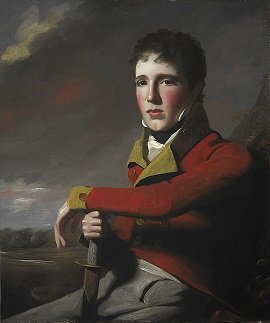
The Napoleonic Wars, which broke out a month after Gregor joined up, gave many opportunities for advancement. It would normally have required three years service for him to reach the rank of lieutenant (unless he bought the promotion), but he managed it in less than a year. The same year he met Louisa Bowater. He may have met her through her brother Edward (who joined the Scots Guard that year), or at the celebrations that accompanied her father’s promotion to Rear-Admiral that same year. However it happened, the dashing young lieutenant swept her off her feet. His rapid promotion seems to have countered his youth in the eyes of Admiral Bowater, and the two were married in June of 1805. Gregor’s new in-laws were as well off as you’d expect for an Admiral’s family, and he used Louisa’s dowry to purchase a captaincy in his regiment.
Captain MacGregor’s regiment was serving in the Peninsular War in Portugal and Spain at the time. Gregor seems to have learnt and become fluent in Portuguese and Spanish at this time, something which would be very useful to him later in life. It might have been this which led to him being seconded to a Portuguese regiment in 1809. Alternatively it may have been his prickly personality. Gregor was notorious both now and later in life for his love of the uniforms and ceremony of the military, and this insistence on proper form may have led him to clash with senior officers in the regiment. This seems likely mostly because when the secondment (which had come with a promotion to Major) ended in 1810, Gregor MacGregor formally retired from the British Army.
Gregor and his wife moved to Edinburgh at first, where he exaggerated his military accomplishments and attempted to gain entry to high society through conspicuous spending and self promotion. This failed miserably, and so they returned to London. Here Gregor began making his claims to be a MacGregor of Glengyle, and even claimed to have inherited the Clan Chief’s position. He called himself “Sir” MacGregor – a title he had absolutely no right to, but one which his portrait in the National Portrait Gallery is listed under to this day. This did get him some position in London society, but primarily this was down to his wife’s extensive family connections. He was also entirely dependent on her income, and when she died in December of 1811 he was left essentially destitute. With nothing left in London, the 25 year old Gregor MacGregor decided to leave the city and seek his fortune somewhere new – South America.
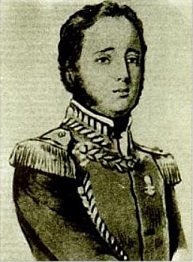
Exactly why Gregor decided to go to Venezuala is hard to pin down. The country had just declared independence under General Francisco de Miranda, who had been an exile in London for many years. It’s possible that Gregor had met him when he returned to London in 1807 to seek support for an invasion of Venezuala. Or it may simply have been that he read about what was going on in the country in the news, and decided to chance his luck there. In early 1812 he took a boat to Kingston, the capital of the British colony of Jamaica. His first taste of South America was to his liking, though few in the city had much time for an ex-military man with a dubious reputation. He headed to Caracas (the capital of the new Venezualan Republic) in 1812, where he presented himself to General de Miranda. His credentials were partially fraudulent (he reportedly claimed to be a Knight of a Portuguese military order) and partially exaggerated (his former regiment had gained great renown, but that was for the battles they’d fought after he’d retired). Still, de Miranda was too desperate to dig too deeply. Caracas had just been devastated by an earthquake, while royalist armies were on the move against the capital. Gregor was made a Colonel, put in charge of a regiment of cavalry and sent out into the field to see how he’d do.
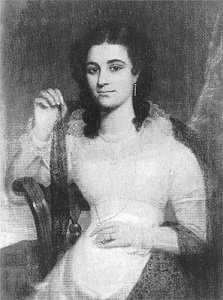
And it turned out he did surprisingly well. The acumen that had seen him made a lieutenant at the age of seventeen was no fluke, and he led his regiment to defeat and rout one of the advancing royalist armies. This immediately gave him a stellar reputation, and he was quickly turned into one of the figureheads of the army. He married a Venezualan woman named Josefa Antonia Andrea Aristeguieta y Lovera [2] (reportedly a cousin of the rising revolutionary star Simon Bolivar) and was promoted to the rank of Brigadier General. Unfortunately for Gregor though, the Republic of Venezuala was falling apart around him. General de Miranda surrendered to the Royalists on the 25th of July. Gregor and Josefa MacGregor, like most of the Republican military officers, fled to Curacao.
Simon Bolivar, who took on the leadership of the Venezualan revolutionaries, decided that there was no point in re-invading Venezuala immediately and began a long process of rebuilding the army. Gregor decided to seek opportunities elsewhere and headed to New Granada, which was also trying to declare its independance from the Spanish crown. General Narino was impressed enough by Gregor (and by his association with General de Miranda) to give him a commission. Most of the forces in New Granada (the future Colombia) were volunteers, and Gregor brought some military discipline with him – which won plaudits from some, and complaints from others. Despite anything he did, however, the forces in New Granada were as doomed as those in Caracas had been. In 1814 the main army was defeated, and Gregor led his forces to retreat to the port city of Cartagena, which was held by Bolivar’s forces. There they were besieged by the Spanish for several months before they decided to run the blockade and flee out to sea.
Gregor dined out extensively in Jamaica on Cartagena, leading many to believe that he had led the defence personally. At the start of 1816 he rejoined Simon Bolivar’s forces as a general. He was separated from the main force recruiting native tribesmen when word reached him that Bolivar’s army had been defeated. Rather than surrender, Gregor led a retreat across hundreds of miles to safety, being attacked by royalists all along the route. The most notable battle came when his force of 1200 men were attacked by a large cavalry force which had caught up with them. Gregor positioned his men behind a swamp where the horses got stuck, then had his native archers pepper them for three hours before charging in. It was a classic tactic, but it worked. Gregor led his troops into Barcelona [3] to a rapturous reception – everyone had assumed they were all dead or captured. The march made him a hero of the revolution. It was the high point of Gregor’s career.
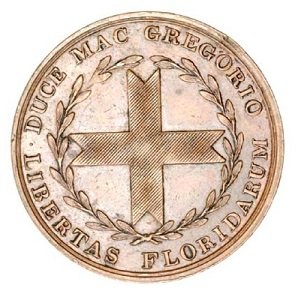
The problem with high points, though, is that there’s nowhere to go from there but down. Gregor’s first mis-step came in 1817 when he was recruited to try to conquer some ports in Spanish Florida to act as revolutionary bases. He went to the United States to try to raise volunteers – always a mistake for South American revolutionaries, not least because it was illegal for Americans to fight in foreign wars. Still, he raised several hundred men to fight for him. He also raised around $160,000 by selling people bonds promising them land in the conquered Florida. Unfortunately for Gregor, most of his recruits would wind up being arrested when they tried to leave the US. He managed to conquer Amalia Island, off the coast of Florida, but was unable to make it from there to the mainland. After several months spent running a “Republic of Florida” that covered maybe 40 square miles, Gregor fled in September of 1817. Command fell to one of his subordinates, Jared Irwin, who less than two weeks later managed to repel a Spanish force that outnumbered his troops three to one. Naturally, Gregor would later take credit for this. [4]
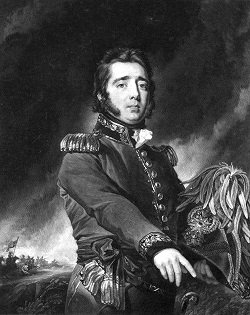
In 1818 Gregor, Josefa and their son Gregorio returned to Britain. The mass demobbing of British soldiers after the Napoleonic Wars had led to a lot of men with soldiering skills being on the job market, and several “British Legions” of mercenaries had already been formed to fight in South America. Gregor raised a company to fight in New Granada, through extravagant promises, and set off in November of 1818 with several hundred men. Lack of pay nearly led to mutiny, and did create what would be a fatal lack of discipline, but General MacGregor (along with his two subordinates, Colonel Woodbine and Colonel William Rafter) did manage to capture the city of Porto Bello. With the city in his hands however MacGregor made the mistake of dallying for three weeks and gave the Spanish enough time to launch an offensive. Worse, his lack of discipline meant that the first his men knew about the Spanish attack was when their soldiers walked into the square and opened fire on the British troops. Gregor was awakened by the gunfire and jumped out of his bedroom window to escape, swimming out to the boats in the harbour. There he sent orders to Colonel Rafter not to surrender, then lost his nerve and fled with the fleet. William Rafter was eventually forced to surrender to the Spanish, and was later executed.
Gregor returned to Aux Cayes, where he found that 900 more recruits (unaware of the Porto Bello fiasco) had arrived from Britain. However his inability to pay them meant that by the time he had managed to get ships in September 1819, over two thirds had deserted. Among the remaining officers was Michael Rafter, brother of William, who was horrified to discover his brother’s fate. Michael Rafter went on to write a highly critical book about Gregor MacGregor, and he paints a picture of this last military adventure that is half farce, half tragedy (and sadly completely unreliable). Gregor’s troops conquered the port of Rio de la Hacha on the 5th October, but discipline among the troops was all but non-existent. With a Spanish counter attack imminent, Rafter and several others deserted on the 10th October. Gregor himself fled on the last of the ships leaving on the 11th, and the troops he abandoned were massacred by the Spanish attack. This last fiasco seems to have burnt up the remnants of Gregor’s reputation in South America, and he was ostracized by many who had once been his friends. In his book Memoirs of Gregor McGregor, Michael Rafter wrote:
To suppose that any person could be induced again to join him in his desperate projects, would be to conceive a degree of madness and folly of which human nature, however fallen, is incapable.
Michael Rafter, it would become clear, was a very poor judge of human nature.
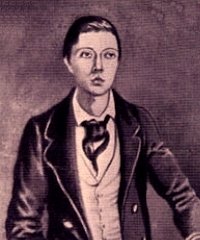
Gregor resurfaced in April 1820 at the court of George Frederic Augustus I, king of the Miskito Sambu and ruler of the Mosquito Coast. Nearly two centuries earlier, a ship full of slaves being transported from Africa had managed to win their freedom, either before or after the ship was wrecked on the coast of what is now Nicaragua. The slaves made it to the shore, where they met a local tribe of native South Americans. There are different stories of what happened – the Africans were re-enslaved, the Africans viciously took control of the tribe, or the Africans were peaceably accepted into the tribe. The end result was a mixed race tribe that in the local creole language were called Miskito Sambu – the Africans of the Mosquito Coast. The Mosquito Coast itself had become a kingdom largely by grace of the British during the 18th century, as a buffer against the Spanish and as a protectorate/colony. The kingdom existed in a stat of flux – George’s father had been assassinated by his uncle Stephen (who was pro-Spain) when he was a child, but the pro-British forces in court had managed to force Stephen to take power as a regent for George rather than as a king in his own right. By 1820 George had taken over as King, and was strongly pro-British, though his power over the local tribes was far from absolute. Quite how Gregor wound up in his court is unclear, as is precisely how he persuaded the King to give him a land grant for 12,500 square miles of land. The land in question wasn’t even entirely under the control of the Miskito, though they claimed it as part of their territory. Part of it was held by a native tribe called the Paya, and it was from them that Gregor derived the name he gave the area – Poyais.
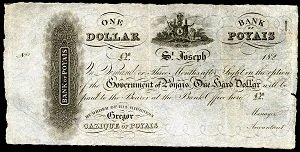
London in 1821 was primed for the arrival of the Prince of Poyais. Gregor MacGregor’s dashing appearance, his association with the heroic 57th Regiment, the reports of his victories in Venezuala and his exotic South American wife all combined to create a larger than life persona. (Reports of his failures were forgotten, for the moment.) He claimed to be attending the coronation of King George IV as the official representative of the British Protectorate of the Mosquito Coast, and gave his title as Cazique – the word for Chief in the Miskito creole. Gregor vastly overstated the Mosquito Coast’s state of development, painting a picture of a highly developed land. Soon the scope of his plan became clear, as (perhaps inspired by his success in selling bonds in Philadelphia for Floridian land) he floated a bond of £200,000 to fund the colonisation of Poyais. He reassured investors that Poyais was rich enough in natural resources that their money would be paid back many times over.) With the money he funded an aggressive advertising campaign to attract colonists, filled with falsehoods that began with claiming that the land already had a flourishing capital and went up from there. He even had a 355-page book, Sketch of the Mosquito Shore, Including the Territory of Poyais, created to sell his vision of the land. Seven ships full of colonists traded in their savings for the “Poyaisian dollars” that Gregor gave them. They ranged from dispossessed Highlanders (the bulk of the colonists), but also included doctors, army officers and even a City of London banker who Gregor charged to establish the Bank of Poyais. The first ships departed in September of 1822, the second in January of 1823. Two thirds of those aboard would be dead within the year.
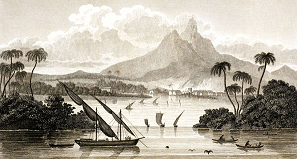
The first shock to the colonists came when they arrived and found that the town of St Joseph, which they had been told was a thriving town of 2000 people, was actually little more than ruins and foundations reclaimed by the jungle. They attempted to set up a town of their own, but class divisions in the colonists meant that many considered themselves too good for manual labour. The leader of the expedition, Hector Hall, set out for the court of George Fredric Augustus I, but returned with news that ho help was available. The second ship arrived a few months later, but a mishap in disembarking spoiled the provisions it had brought and put further strain on the colony. And then spring arrived, and with it the swift onset of the South American diseases which had always taken a massive toll on European settlers. Twenty people died within two weeks. A cobbler from Edinburgh who was sick shot himself in despair. A group of colonists built a boat to try and get help, but it was wrecked. Six of them were rescued by a passing ship from Honduras, the Mexican Eagle. On board was a Mr Bennett (who was either the Chief Magistrate of Belize city, or a mahogany merchant, or both). He told them that everything Gregor had told them was a lie. Around the same time Hall persuaded George Fredric Augustus I to visit the colony, but he told them that he considered Gregor’s land claim null and void and that they were trespassers on his territory. He threatened to bring seven thousand tribesmen down on them if they did not swear fealty to him or leave his territory. The vast majority chose to take up Mr Bennett’s offer of sanctuary in Belize, and the Mexican Eagle took them (in three very cramped trips) away. Most were still deathly ill, and despite treatment around 170 of the 250 colonists (including Hector Hall) died. [5]
Some of the survivors had returned to London by October of 1823, desperate to stop the other ships from setting out and delivering more souls to the same fate. The police were involved, as Gregor was charged with fraud, but he had departed for Paris a week earlier to raise more investment for Poyais. It’s unclear how much Gregor believed his own claims, though he had to have known that most of what he had claimed about Poyais was false. He managed to persuade some French firms to invest in Poyais, and even wrote to the King of Spain offering to make Poyais a Spanish protectorate and a foothold on the Mosquito Coast. The King never replied. Despite the reports from the British press (which he dismissed as being the result of the British colony of Honduras trying to squash a competitor) he managed to arrange a ship of French colonists to go out to Poyais, but luckily for his would-be settlers French law required them to apply for and obtain passports to travel. The officials were confused by people asking to travel to a non-existent country and investigated. They refused to allow the ship to depart port, and Gregor’s French partners were arrested on charges of fraud. Gregor went into hiding, but he was arrested in December of 1825 and imprisoned in La Force prison in Paris.
Fortunately for Gregor one of the directors of the Poyais company had fled to the Netherlands and was tried in absentia, so he and the other two directors were able to pin all the blame on him. Gregor was released in July and returned to London, where he was arrested, held for a week and then released without charge. He spent the next ten years on various Poyaisan schemes to raise money, though he soon found himself competing with the new king of the Miskito Zambu, Robert Charles Frederic (brother of the previous king, who had been strangled by his wife). Still, he did manage to make enough money from these schemes to live on, as the sheer amount of money involved in the previous Poyais schemes served to convince people that there had to be some kind of legitimacy to his claims. In 1834 he returned to Edinburgh, where he found a new audience for his schemes. And then in 1838 Josefa MacGregor died.
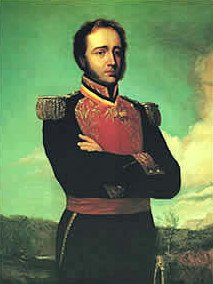
Just as the last time his wife had died, Gregor seems to have responded to grief with a strong desire to move away. And just as the last time, he decided to travel to Venezuala. The current defence minister was a veteran of the same battles that Gregor had fought in, and with his aid Gregor was able to argue that his commission as a Brigadier-General in the Venezualan Army had never been revoked. As a result he was granted a military pension, along with the back pay due to him. His heroic retreat to Barcelona was still considered a key part of the revolutionary narrative, and so many in Caracas treated Gregor with the respect he’d always felt he deserved. His failures were forgotten, his victories celebrated, and he spent the last seven years of his life in comfortable retirement. He died in December of 1845, and was buried with full military honours as a hero of the revolution. His obituary made no mention of William Rafter, or Porto Bello, or Rio de la Hacha, or the dozens dead on the Mosquito Coast with their blood on Gregor’s hands. In death, for a while, he was allowed to be the man he’d always thought of himself as – a Gregor of the MacGregors, a warrior and a hero.
Pictures via wikimedia except where stated.
[1] One of those who did live there, Gregor “Ghlun dubh” MacGregor, shared a name with and died the same year as Gregor “Boich”. However far from being a loyal officer of the Black Watch who was presented to the King, Gregor “Ghlun dubh” was a Jacobite loyalist who was notorious enough to be excluded by name from the general pardon issued to Jacobites by George II in 1747. This similarity of names seems to have been a source of confusion, which Gregor the younger exploited to advance his own fame and which persists even in books written within the last few decades. It was also lent credence by his sister marrying into the Glengyle MacGregors.
[2] Different sources give different maiden names for Josefa, but this seems to be the most common.
[3] Not that Barcelona.
[4] Irwin, a veteran of the War of 1812, managed to hold the island until December when he was relieved by the American Navy. They took possession of the island as they were already planning to take Florida from the Spanish by either diplomacy or force of arms.
[5] Hall’s long departures from the camp to seek help from the Miskito Zambu, and his insistence that the middle-class members of the expedition take part in manual labour, meant that some among the survivors blamed him for the failure and insisted that he must have “misled” Gregor.
